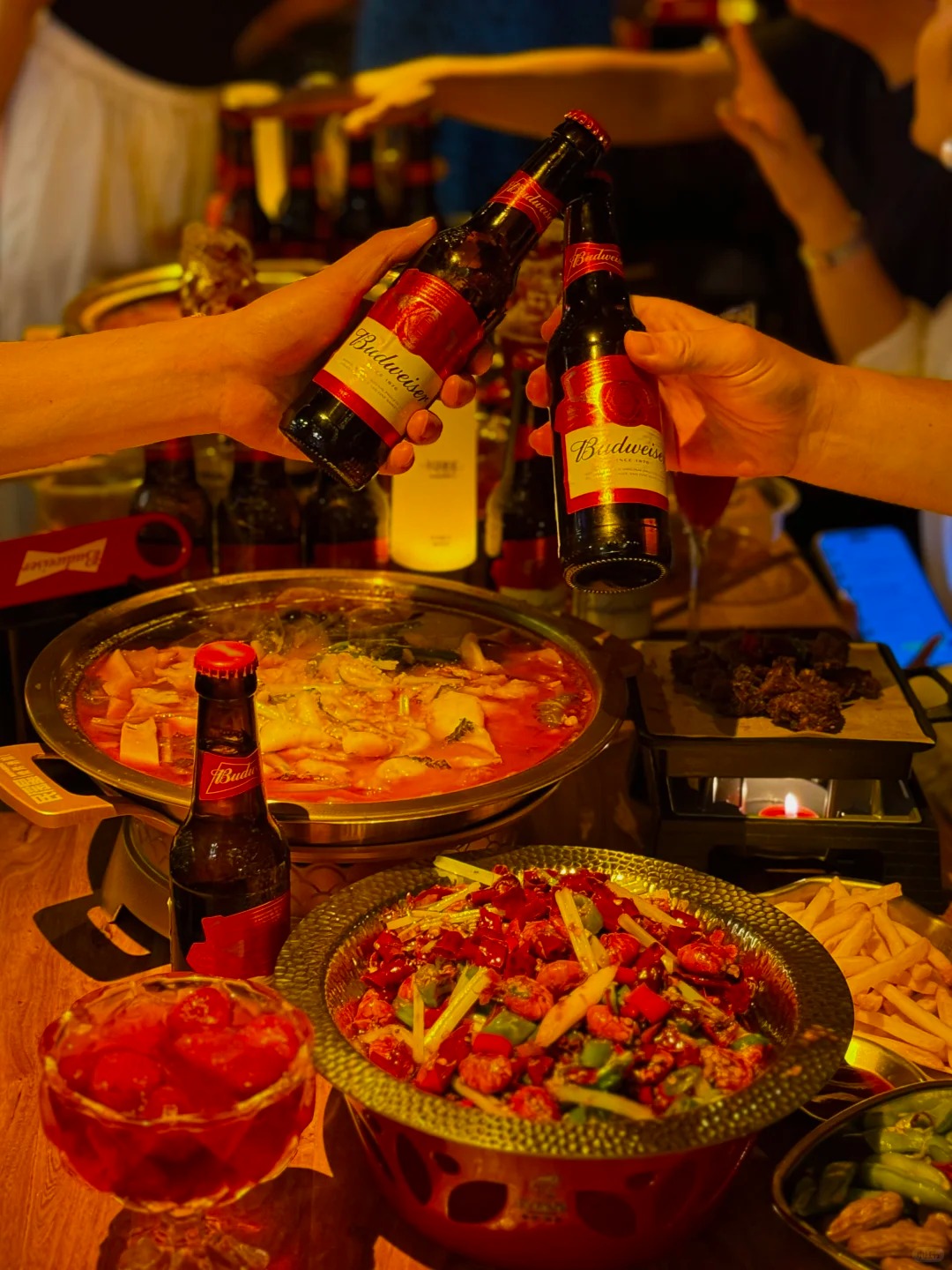A blend of ancient and modern, Shanghai is one of the most visited places in the world. In addition to boasting exceptional skyscrapers like The Shanghai Tower, Shanghai is also famous for its historical landmarks. This guide is tailored to help you uncover some of the most renowned attractions in Shanghai, be it the old-style buildings on the Bund or the Oriental Pearl Tower. As we take you through the lively city, you will uncover many important landmarks which, along with their description provided here, will enable you to experience Shanghai like never before. One of the best-known cities in China, are you ready to explore Shanghai?
What Are the Best Shanghai City Tours?
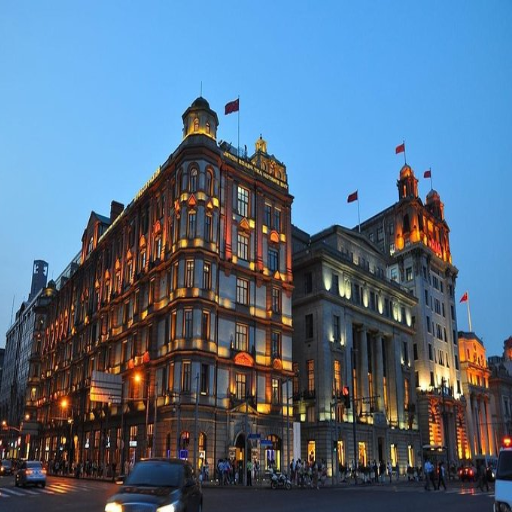
Top Highlights of Shanghai Sightseeing
The Bund: The Bund, located along the Huanpu River, uniquely combines timeless architectural marvels. Encircled by colonial-era structures and splendid skyline vistas, the Bund remains a favored hotspot. Moreover, it is well-known for evening aesthetic cruises and stunning light displays, thus offering an unforgettable experience on lake tours.
Yu Garden (Yuyuan Garden): Set within the Old Town, Yu Garden is a classical Chinese garden of historical significance dating back to the Ming Dynasty. It features beautifully curated pavilions alongside koi ponds, which offer serenity, making it an architectural wonder worth visiting for enthusiasts.
Oriental Pearl Tower: An icon showcasing cultural significance, the Oriental Pearl Tower is a dominating structure on the city’s skyline. It features a panoramic view deck alongside immersive exhibits and a revolving restaurant. The Tower is a blend of futuristic and contemporary styles.
Nanjing Road: One of the busiest shopping streets globally, Nanjing Road is bustling with shoppers day and night and a harbor for entertainment and culinary delights. The Road is a paradise for all shoppers, featuring local boutiques and global brands.
Shanghai Museum: Centrally located in People’s Square, the Shanghai Museum is a world-class museum that is an educational stop for art lovers. It showcases China’s rich heritage, featuring collections of ancient ceramics, jade, bronze, calligraphy, and other invaluable treasures.
Tianzifang: Situated in the French Concession area, Tianzifang is known for its bohemian charm and artistic features. The narrow alleyways are filled with local fashion, quaint cafes, art galleries, and boutique shops, showcasing Shanghai's captivating creative culture.
Every highlight represents a distinct aspect of Shanghai, showcasing its equilibrium between modernity and tradition. Whether you are a history buff, an architectural marvel enthusiast, or a follower of present-day culture, the city offers an experience worth remembering for a lifetime.
Private Shanghai Tours for Personalized Experiences
Unlike group tours, exploring Shanghai through private tours provides an opportunity for deep engagement with the city’s history and modern landmarks. They offer a comprehensive view of the city that considers the Shikumen architecture, the Symphony of Lights, and the delicious local cuisine. Moreover, with private tours, travelers often visit places not on the tourist map, listen to captivating tales of Shanghai's evolution, and have a glimpse of the making of traditional crafts.
Some tourists love world-class food and opt for cuisine-themed tours, where guides take them through food stalls in the Shanghai street markets. Others prefer strolling through scenic regions like Old City or the French Concession. Private tours also come with many perks, such as flexible schedules and transportation, thus making the experience comfortable and unforgettable. Whether it is your first time in Shanghai or you are a frequent visitor, private tours guarantee complete satisfaction to all as they expose guests to the beauty and culture of Shanghai, which are in abundance.
Must-See Sites in Shanghai
Shanghai is a unique place that has retained its traditional roots while also modernizing itself, making it a point of interest for many. One of the places to visit here is the Bund, a beautiful streetside harbor near colonial-era buildings. This place also offers visitors a fantastic view of the Chinese Lujiazui Skyline, which includes famous skyscrapers such as the Oriental Pearl Tower, which serves as a city symbol. Shanghai Tower, the tallest building in China and the second tallest in the world, is also found there.
The Yu Gardens and their exquisite scenic views are a cultural landmark of China that must be visited. It is a classical garden from the Ming Dynasty with features such as carved ponds, ancient trees, and pavilions. Yuyuan Bazaar is quite close to it and provides its visitors with a lively environment filled with local crafts, culinary wonders, and brilliant souvenirs.
When visiting Shanghai, the Shanghai Museum must be part of the itinerary due to its collection of ancient Chinese art, including bronze sculptures, ceramics, and calligraphy. This zoastic place is known as Tianzifang, a perfect blend of tranquility and vibrance where people can find a myriad of boutique shops, art galleries, and cafes.
While the striking skyscrapers and busy streets of the city seem to be brimming with unending activity, for those looking to find a bit of serenity, the temple of Jing’an might be what they need, as it acts as a peaceful haven. This elegant Buddist temple is magnificently crowned with golden pagodas and offers a great view of Shanghai's spiritually rich culture. You could spend a relaxing day with your family or go for long walks at Century Park, which is sprawling with greenery.
As for shopping, Shanghai has a dedicated shopping district called Nanjing Road, which is known for its diverse array of high-end stores and local boutiques, attracting many tourists. Adding to the charm are the dazzling lights at night, transforming the road into something spectacular. No matter your preference, these places encapsulate the beauty of Shanghai and its rich history, ensuring that you carry them in your memories for a long time.
What Are the Most Immersive Experiences in Shanghai?
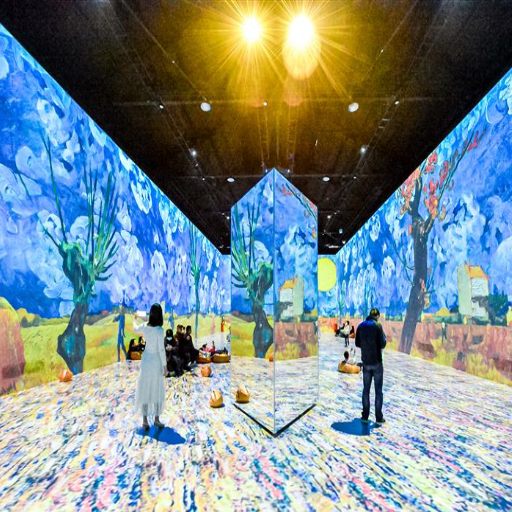
River Cruise on the Huangpu River
River cruises on the Huangpu offer the best access to the many intriguing sections that make Tokyo what it is. Each section of the Huangpu River tells its own story and history. Shanghai's modern architecture is located in the eastern section, the Pudong region. In contrast, the more traditional architecture is in the western section, which is known as the historically rich Puxi region. Traveling through this specific waterway gives you the chance to experience the astonishing fusion of Shanghai's long-standing traditions and incredible advancement that the city has gone through.
The PuXi section showcases its colonial heritage with numerous buildings located along the waterfront, displaying their classic architectural grandeur. The other side of the river is dominated by Pudong, which boasts a newer high-end location with the Subway and South Station, with numerous towering skyscrapers, including the famed Oriental Pearl Tower, Shanghai Tower, and Jin Mao Tower, all glowing at night. All of these iconic towers have further added to Shanghai's tourism. Evening river cruises experienced a surge in popularity due to these furnaces changing colors, lighting up both sides of the rivers, and being reflected in the water's kaleidoscope-like surface.
Numerous tour operators provide different options for cruises, ranging from short trips to luxurious, longer excursions complete with meals and entertainment. Like many other cruises, these trips around Shanghai incorporate multilingual audio guides, helping visitors appreciate the city's rich history and culture. No matter the occasion, be it a romantic evening getaway, a family-friendly outing, or simply wanting to view Shanghai from a new perspective, the Huangpu River cruises are a must for anyone wishing to experience the city in a picturesque way.
Exploring Zhujiajiao Water Town
Zhujiajiao Water Town is about an hour's drive from Shanghai’s core and is often called the “Venice of Shanghai.” This ancient town features arched stone bridges, charming canals, traditional architecture from the Ming and Qing Dynasties, and mouthwatering feasts. With a staggering history of over 1,700 years, visitors can appreciate the omnipresent natural beauty by strolling along cobblestone streets dotted with local art shops and waterfront teahouses.
One of the most stunning sights to behold is Fangsheng Bridge, which has been standing since the Ming dynasty. It is constructed with five arches to offer breathtaking views of the surrounding waterways. Also serving as a great way to appreciate Zhujiajiao’s serene beauty, boat rides provide a tranquil and unique view of the entire town. The post office is a remnant of the Qing Dynasty and serves to mark Zhujiabaio's trading prominence. It, along with Kezhi Garden, adds to Zhujiajia's treasure of cultural landmarks, serving as classical architectural beauties along with lotus ponds.
Food lovers will enjoy the town's local specialties, like fresh river shrimp, sticky rice dumplings, and roasted sweet chestnuts. Zhujiajiao Water Town is enchanting in its own right and quite suitable for a day outing, as it perfectly integrates nature, culture, and history. It is one of the places one must visit when exploring the delights of Shanghai.
Visit the Shanghai Museum for Cultural Insights
The Shanghai Museum is a must-visit while in Shanghai. As the pinnacle of interest for Chinese art, history, and culture, it is a must-see. Anticipating visitors will agree that the museum is an architectural masterpiece because of its rounded dome and square base, signifying ancient China’s belief in a ‘Round Heaven and a Square Earth’. Inside the structure, tourists can find more than 120,000 priceless relics in 11 galleries and 3 exhibition halls.
Exemplifications comprise the archeological Bronze Age collection, which displays artistic bronzes from the Shang and Zhou dynasties, and traditional Chinese painting and calligraphy, which showcase the artistic progression over centuries. Visitors to the museum will also find enthralling exhibits of ceramics, jade, and furniture, illustrating the creative and stylistic accomplishments of different dynasties. The Shanghai Museum is ideal for individuals interested in history and is an engaging yet informative place for anyone looking to enhance their understanding of Chinese culture. Entry to the museum is mostly free; however, visitors should confirm in advance if any special exhibits that might require an additional charge are being showcased.
What can you expect from a private tour in Shanghai?
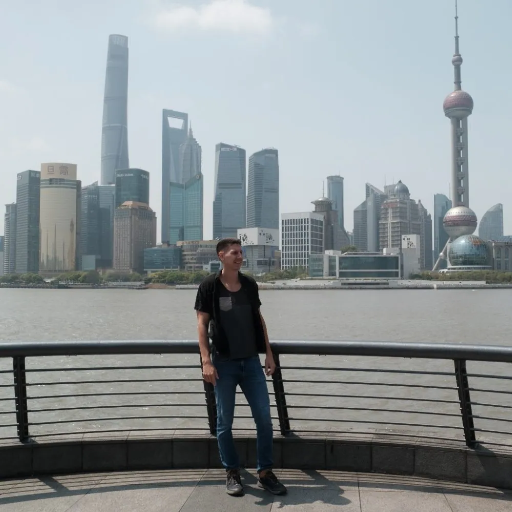
Benefits of Choosing a Private Shanghai Tour
Selecting a private tour in Shanghai affords a richly tailored experience that guarantees the trip aligns with your interests. In contrast to group tours, private tours have no fixed itineraries, which permits you to visit landmarks such as The Bund, Yu Garden, or the bustling areas of the Former French Concession at your convenience. You will benefit from the exclusive services of a guide who can share with you in detail the history, culture, and other interesting aspects of the city, which guarantees that the visitor connects with the city on a higher level.
Another notable advantage is convenience and comfort. There is always private transport, which cuts the need for public transport and shared vehicles, which is helpful during sightseeing. There are also culinary tours that specialize in local dishes such as xiaolongbao and other private tours that focus on art districts and craft stores deemed lesser known. Whether you like history, food, or shopping, private tours in Shanghai ensure that the visitor enjoys the entire period in the city without having to do any work.
Customized Itineraries for Unique Interests
These private Shanghai tours usually feature an array of tailored adaptations that fit each traveler's preferences. For example, art lovers can visit renowned museums, including the Power Station of Art and M50, where contemporary Chinese art is flourishing. The Bund and the ancient alleys of Tianzifang are also rich in history and serve as a stunning view for tourists. Gastronomy enthusiasts are treated to watching culinary preparations and bustling food markets such as the Yuyuan Bazaar, which is a perfect example of brimming with Shanghai's authentic flavor.
Custom tours, specially curated for enduring travelers, ensure that their participants engage in real-time events like spring's cherry blossom walks and summer night cruises on the river. Such tours ensure that every participant reveals undisclosed wonders and enjoys the ever-changing events. Unique characteristics of the region are incorporated so that the tours become unforgettable for the travelers.
Guided Tours of the Shanghai Tower and World Financial Center
The city's panorama and modern architectural masterpieces can be viewed by visitors from the top of the World Financial Center, which is also a subject of novelty, together with the magnificent Shanghai Tower. The latter has the highest elevation of 632 meters, making it the tallest skyscraper in China. Besides having one of the fastest elevators in the world, the Shanghai Tower is equipped with the fastest elevator that takes people to the observation deck in a record time. The double-skin façade, which has been designed to minimize energy consumption, is further enhanced by the Shanghai Pillar, which features a sign that portrays the city’s drive towards more eco-friendly metropolitan development.
The trapezoidal aperture on the World Financial Center, which has been recognized worldwide, gives it its hallmark, notwithstanding its height, which measures 492 meters. This landmark greatly appeals to the tourists on the 100th floor Sky Walk, who stand in awe of the glass floor while checking out the mesmerising landscape of Shanghai. There is no denying that both of these international landmarks defined the world’s architectural designs and engineering zenith, which prompts their integration into every tourist’s itinerary to experience firsthand the Shanghai's stunning skyline.
How to Maximize Your Time on a Short Getaway from Shanghai City?
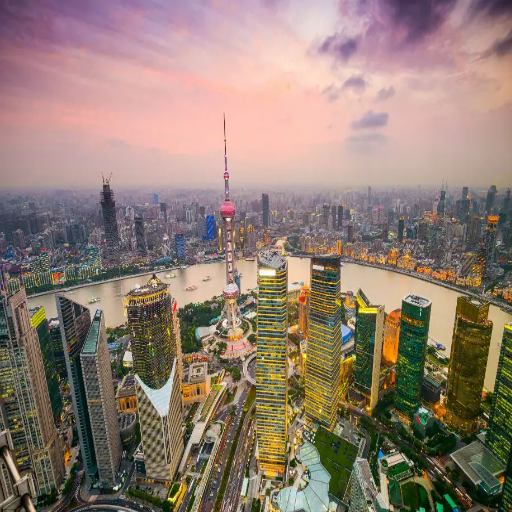
Day Tours to Nearby Attractions
If you wish to take a break from the noise and commotion of Shanghai city, this might be a great opportunity to relax somewhere outside the city. A prime example of such a location is Suzhou, often dubbed the Venice of the East, where one can witness stunning classical gardens like the Humble Administrator and Lingering Garden. Exploring this area is also straightforward since it is less than a thirty-minute ride away by bullet train. This means it is a perfect addition to anyone's travel itinerary.
Hangzhou is another city worth visiting due to its famous West Lake, a UNESCO world heritage site. Tourists and residents alike can take a more traditional approach to touring this area by taking boat rides, visiting pagodas located around the lake, and walking along the well-maintained pathways. Longjing Tea Plantation is also the go-to spot for tea lovers who want a more hands-on approach to China's green treasures.
For nature lovers, the Yellow Mountain (Huangshan) offers a spectacular and inspiring getaway. Huangshan's stunning views, including hot springs, a mesmerizing sea of clouds, and dramatic peaks, are about a three-hour trip via high-speed train. Each location has its own intriguing mixture of culture, history, and natural beauty that will make your short trip from Shanghai worthwhile and ensure that you experience something restorative and memorable.
Tips for Quick Sightseeing in Shanghai
Arrive Early to Avoid the Crowds: Starting your day early enables you to marvel at the Bund’s stunning skyline or explore the classical Chinese architecture of Yu Garden without the influx of tourists. Early risers also benefit from perfect lighting for photography.
Take Advantage of the Metro System: The subway system in Shanghai is arguably the most convenient and inexpensive mode of transportation. It serves more than 500 stations and facilitates swift access to key destinations, such as the People’s Square, Jing’an Temple, and the Shanghai Museum.
Plan Each Side of the Town for Separate Days: The Huangpu River divides Shanghai into two sections, Pudong and Puxi. It is more efficient and less time-consuming to devote each day to a single area, ensuring full exploration of key attractions such as the sleek new skyscrapers in Pudong or the ancient streets of the French Concession in Puxi.
Plan Selected Day Trip Locations with High-Speed Train Access: If time permits, Suzhou’s tranquil classical gardens and Hangzhou’s famous West Lake are two suggested destinations for short but worthwhile day trips. Both are accessible within a couple of hours via high-speed train.
Taste Cuisine in a Rush: Bypass local markets to grab a bite of Xiaolongbao or Jianbing and experience Shanghai’s mouthwatering and celebrated street food like never before. You will not have to waste much time eating while enjoying the culinary experiences that Shanghai offers; best of all, these options are quick, tasty, and authentic.
Free Cancellation Options for Flexibility
Ordinarily, travelers view the booking of services, including accommodations, tours, and activities, as a commitment. They make these commitments weeks or even months in advance. However, as most people participating in modern tourism have to follow an itinerary, personal considerations can often lead to the sudden alteration of schedules. To adapt to these evolving challenges, including those of a personal nature, service providers incur no cancellation fees throughout Shanghai.
Cancellation without penalty can be completed on a wide range of travel plans. Some hotels and travel operators have started to provide some options where alterations won't incur extra costs if changes are made, and there is a window in which changes can be made before the deadline. Many hotels allow free cancellation within 24 to 48 hours of check-in, which helps travelers easily change their plans on short notice. This enhances the neatness of the trip and reduces psychological pressure on the travelers.
Alongside cancellation polices, transport services are now more reserved with Shanghai high-speed trains, and selected airlines are now more liberal with imposing policies. The major train tickets suffered a blow regarding refunds and exchanges before departure. Still, some airlines now offer post-purchase, free rebooking, or a full refund within a certain time period. These solutions aid the tourist in using money efficiently and effectively, dealing with sudden changes in the weather, postponements, or even shifts in time planning. Using services with a more loose approach cancellation policy allows charging energy, leaving tourists a trail in dynamic tourist areas like Shanghai, without worrying about commitment.
What are the best areas for Sightseeing in Shanghai?
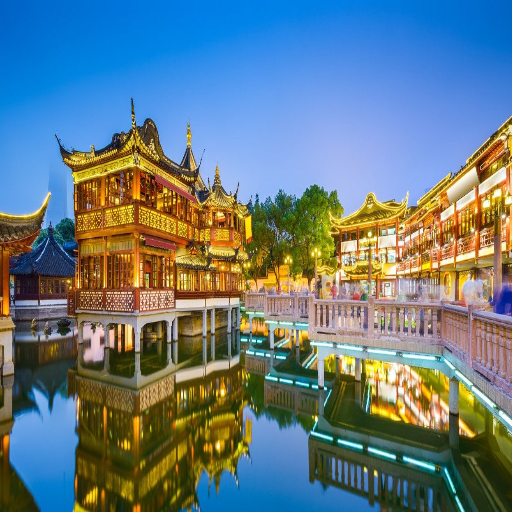
Exploring Lujiazui and Its Skyscrapers
Lujiazui is proudly the Shanghai financial district, which is unparalleled for its charm. It is popular with those looking for a stunning view of the city’s skyline. The Shanghai Tower is one of the most iconic structures, and it marks Shanghai’s skyline. Standing tall at 632 meters, it holds the record of being the second-tallest building in the world after the Burj Khalifa. Shanghai Tower is often mentioned for its breathtaking observation deck and unparalleled city views. Other iconic towers include Jin Mao Tower and the Shanghai World Financial Center, popularly named The Bottle Opener because of the shape it bears. These buildings, while adding to the beauty of the skyline, also act as gates marking the entrance to Shanghai city. These towers with beautiful landmarks embody the wedge of modernity and tradition, a significant characteristic of Shanghai city.
Similarly, public spaces developed like the Lujiazui Central Greenland Park and Century Avenue add a cherry on top by giving an eye-soothing beauty to Split and turning the area into a calm sanctuary. Tourists can relish the sprawling elegance and enjoy the enthralling views along the promenade walk. Striking views of the Huangpu River can be witnessed along the walk, with the iconic sunset view, immersing you in the vibrant energy the city offers. Stunning Shanghai river views coupled with the beauty of the shimmering waters make the Lujiazui region one of a kind, enabling effortless exploration through aided guided devices, then allowing people to witness the essence of what makes Shanghai renowned on a broader platform.
Walking Tours of the Bund
When every one of my friends asks for tips on the walking tours of the Bund, my first suggestion is always to start from the southern end near the Waibaidu Bridge. From this point, the walk uncovers the breathtaking skyline view of Shanghai along with the Bund and modern towers of Lujiazui across the Huangpu River. Every building along the Bund tells a piece of the city's history and showcases the different architectural styles, including Art Deco, Neoclassical, and Gothic Revival. Gaining a step here is almost like traveling to where Shanghai ascended as an international metropolitan in the 19th and 20th centuries.
The walk along the Bund promenade serves as a historic record and provides a view of the Customs House and its clock tower, the HSBC building with its dome and elegant style. For all the folks interested in history, spend your time learning about every important structure using the guides prepared around the walk, and plenty of informative plaques are displayed along the route. The overtly gleaming Huangpu adds dynamism visually while ferries sail along, and the modern skyline is mirrored in the water. The combination of modern and ancient landmarks of the Bund sets its appeal and defines the walk as one of a kind.
The late afternoon is my preferred time to visit the place because the sunset enhances the skyline and is favorable for photographing. As the night sets in, the Bund undergoes a complete transformation, with golden lighting gently illuminating the historic structures, and the skyscrapers in the Pudong district bursting into life with colorful LED lights. This unforgettable stroll captures the rich heritage and modern architecture of Shanghai, enabling visitors to cherish the characteristic charm of the city even more.
Visiting Yuyuan Garden for Tranquility
In my last trip to Yuyuan Garden, I was captured by its serene beauty and specific details that intricately merge. Located in the very heart of the old city of Shanghai, this classical Chinese garden serves as an oasis from the hustle and bustle. While going through the protruding paths, I was surrounded by lavish pavilions, rock-cut pieces of art, koifilled ponds, which looked like nature itself sculpted them. The combination of deeply rooted history and tranquil atmosphere of the garden, which goes back to the Ming Dynasty, made me feel like I wandered off into an entirely different era.
Sitting beside the Grand Rockery, famous for its towering formation of jagged rocks, my ears were greeted by the gentle sound of water within the vicinity. I felt every feeling that I had missed out on for years. The bridges in The Moongate are placed all over the garden and carry a substantial amount of intricate art, adding a magical touch to the overall setting. It shocked me how every part of the garden was as beautiful as the next, and every element was added with utmost detail and care, from the architecture down to the flowers themselves.
Going to Yuyuan Gardens was more than just sightseeing for me; it was rejuvenating. The blend of nature with craftsmanship to such an extent allows one to reflect on oneself and relax. If you are searching for peace in the bustling regions of Shanghai, Yuyuan Garden is my recommendation. The gardens are a masterpiece of ancient Chinese art, leaving the viewer in awe, calm, and tranquility.
Frequently Asked Questions (FAQs)
1. Which attractions are a must for tourists in Shanghai?
There's no shortage of places to visit in Shanghai. The Bund gives visitors a view of the city’s skyline, featuring modern skyscrapers alongside colonial buildings. You can also visit Yuyuan Garden, which is an escape from the chaotic city with its classical Chinese garden design. The adjacent area is also home to the exotic Shanghai Tower and Oriental Pearl Tower, which offer one-of-a-kind views of Shanghai. If interested in culture, you can visit the Shanghai Museum and the Jade Buddha Temple.
2. What is the best month to visit Shanghai?
The best times to visit Shanghai are in the spring from March to May and in the Autumn from September to November. These months offer Shanghai a mild, pleasant temperature and great natural scenery. The spring showers, along with the beautiful blooms and autumnal colors, provide tourists with a one-of-a-kind experience in the city.
3. What is the means of transport around the city that I can use during the tour?
Public transport in Shanghai, including buses, metro, and taxis, is well developed and efficient. The metro is one of the most popular modes of transport due to its price and the existence of a wider network that connects almost every tourist spot. Alternatively, you could also take a ferry ride across the Huangpu River for a more memorable experience or a sightseeing bus to cover a larger area.
4. Are guided tours available, and should I opt for one?
Yes. In-depth guided tours are widely available in Shanghai. They are great for keen travelers as they provide insight-rich information, and major attractions often feature skip-the-line convenience. Culturally focused walking tours in the Old City and luxurious river cruises are among the many guided tours offered that cater to various budgets and interests.
5. What local dishes should I try during my trip?
Shanghai has a rich culinary background. You should not miss out on xiaolongbao (soup dumplings), shengjianbao (pan-fried dumplings), and Shanghai-style rice cakes. For those with a more adventurous palate, drunken crab and braised pork belly are must-have flavors. The best places to relish the local taste are street food markets and traditional restaurants.
6. What are the shopping opportunities in Shanghai?
Whether you are a high-fashion shopper or prefer traditional crafts, Shanghai has something for everyone. Nanjing Road and Huaihai Road are famous for their luxury stores and brands. For a different shopping experience, Tianzifang and Dongtai Road Antique Market offer local crafts, art, and vintage pieces.
7. Do I need any specific documents or tickets for attractions in Shanghai?
Tourists generally need to present identification or a passport for ticket purchases at many attractions. Some well-known places of interest also have online booking systems that can be more convenient and guarantee access during busy periods. It is prudent to look up what is necessary before a trip.
8. Is Shanghai a family-friendly destination?
Of course! Shanghai Disneyland, the Shanghai Ocean Aquarium, and Century Park are popular with families. The city's inhabitants and visitors can find countless activities specially designed for children of all ages that are entertaining while also educational and exploratory.
